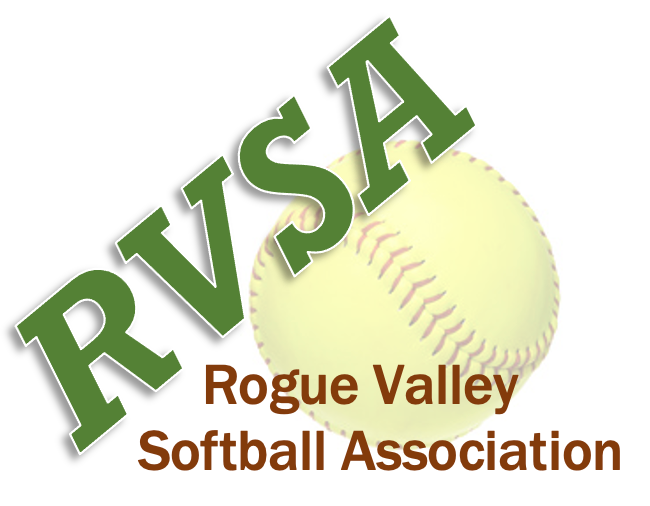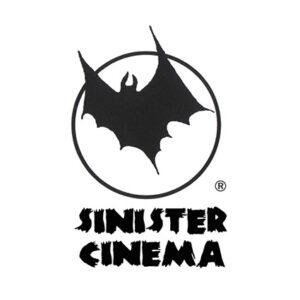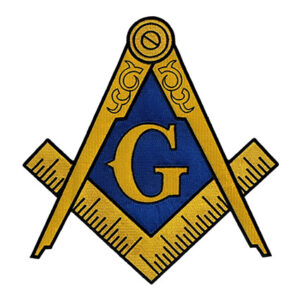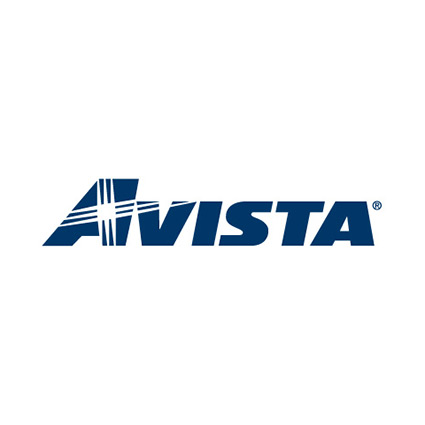Rogue Valley Softball Association Day League
2024 Procedures and Rules
The Rogue Valley Softball Association (RVSA) is a recreational Day League requiring membership. The primary goal of the RVSA is to welcome players of all levels of experience, skill, and physical ability. This includes following the guidelines of the Americans with Disabilities Act. It is not about winning or losing but having fun, developing camaraderie. and simply enjoying the game of softball.
PROCEDURES
1. GENERAL INFORMATION REGARDING THE RVSA DAY LEAGUE
- The Day League follows the Senior Softball USA Rulebook except where amended by RVSA. Whatever SSUSA rules are in effect at the time of the September annual members meeting shall remain in effect through the September annual meeting of the following year, regardless of any changes SSUSA might make to its rules during that year.
- The Day League is open to women aged 30+ and men aged 48+. To be eligible, a participant must become the minimum years of age during the current calendar year.
- To be considered for participation in Day League functions a prospective member must complete and sign the Application and Indemnity Form. Annual renewal is required.
- The RVSA Board of Directors reserves the right to deny or terminate membership, with cause, at any time.
- League members are expected to comply, at all times, with the RVSA rules, the Senior Softball USA Rulebook, as well as field use requirements as determined by the City of Medford.
- Day League members assume the risk involved arising from participation in any RVSA sanctioned league games and practices.
- The use of alcohol or other intoxicants while actively participating in a league game is strictly prohibited.
- The Board of Directors will appoint league members to fill various committees or advisory positions as necessary.
- Unsportsmanlike Conduct: Unsportsmanlike conduct includes, but is not limited to, the failure to accept the decisions of the umpire or team manager, taunting or degrading an opponent or teammate, abusive or profane language, or any other demeaning language or act that could be considered unsportsmanlike. Any player engaging in unsportsmanlike conduct or failing to abide by RVSA and SSUSA rules is at risk of ejection from a game. Extreme, excessive, or repeated instances of unsportsmanlike conduct or failure to follow established rules could result in suspension and/or termination from the RVSA.
All such acts will be reviewed by the RVSA Board of Directors who will render the decision to either suspend or terminate from the RVSA.
2. TEAMS
- Teams will be formed by the Team Committee to attempt balance and parity.
- The Team Committee reserves the right to adjust team personnel to maintain balance and parity. Furthermore, only the Team Committee can assign a player to a team on a permanent basis.
- Permanent team rosters will consist of a minimum of 12 players. If a team’s roster falls below 12 players, the team manager may apply to the Team Committee to add players until the team reaches the 12-player level.
- Teams are allowed to play a game with a minimum of 9 players but can add temporary players to the team roster, on an individual game-by-game basis, if players are available. Team managers may request additional temporary players through a Day League Committee Member. Only the Day League Committee Member can determine which players can be added to a team roster on a temporary basis.
- If a team fails to field 9 players and no additional players are available, players can be made available from the opposing team if agreed on by the team managers and a Day League Committee Member.
- Players added to a team roster on a temporary, game-by-game basis, will be placed at the bottom of the team batting order. Permanent players who show up late may enter the game and will be placed at the bottom of the batting order.
3. MANAGERS
- Managers will be appointed by the Board of Directors.
- Managers, not the players, must control the game. Only team managers will resolve any on field dispute. Any disputes not resolved by the managers will be referred to a Day League Committee Member.
- Managers are solely responsible for the administration of their respective team. This includes, but not limited to, line-up cards, rotating players fairly, knowing the rules, schedules, etc. Managers will bat all players on the roster and will ensure everyone on the roster plays defense unless a player chooses not to do so.
- Second Game Batting Order: Managers shall set the batting order in the second game starting with the next batter following the last player to bat in the first game.
- Managers are solely responsible for requesting roster additions.
- Managers will maintain a copy of the SSUSA Rulebook (provided by RVSA) as well as a copy of RVSA rules.
4. UMPIRES
- League supplied umpires will be positioned at home plate and be responsible for calling the game. This includes balls, strikes, outs, and other elements integral to the game.
- If a league umpire is not available, then team managers will use their first base and third base coaches as base umpires. The 1st base coach will be responsible for calls at 1st base, home plate, and the right side of the outfield. The 3rd base coach will be responsible for calls at 2nd base, 3rd base, and the left side of the outfield. Catchers will be required to call balls and strikes and keep track of the count.
5. EQUIPMENT
- All SSUSA approved makes and models of slow-pitch softball bats are legal.
- The 2024season will begin with a COR 44 softball.
- Soft sole cleats are recommended for league play. Metal cleats are prohibited.
- All gloves or mitts suitable for infield or outfield play are legal and can be used at any position.
- Any offensive or defensive team member may wear a National Operating Committee on Standards for Athletic Equipment approved helmet or mask, shin guards or a heart/chest protector.
- Pitchers shall wear a protective face mask or helmet while pitching and must wear the mask or helmet consistent with the manufacturer’s intended usage of their product. NOTE: A pitcher can choose to use a protective pitching screen and, in that case only, a protective face mask or helmet is not required.
- Pitchers are advised, but not required, to wear additional protective safety equipment comprised of heart/chest protection and shin guards.
- Any softball equipment deemed unsafe by RVSA officials will not be permitted to be used in RVSA sponsored events.
RVSA Day League Rules
The following are the exceptions from SSUSA:
- TIME LIMIT. There is no official time limit. However, the first game of the day should play a full 7 innings. The second game of the day can terminate after 5 innings of play but only if both managers agree.
- RVSA has no limit on over the fence home runs.
- LEAVING A GAME EARLY. There will be no penalty on a batter who leaves a game early. No out will be assessed. A substitute will take that spot in the lineup. If no substitute is available, that spot in the lineup will be deleted. The player leaving the game may not re-enter that game.
- MERCY RULE. RVSA does not play with the 10-run mercy rule.
- BATTER ADVANTAGE. To be eligible for this rule, the player must volunteer to the Board for consideration. Managers will announce at the beginning of the first game of the day who their players are that qualify for this rule. When eligible players (herein known as the batter) get in the batter’s box, the infielders need to be completely on the brown area of the field. The rover is “out of play” and may not touch a batted ball or otherwise participate in the play of a batted ball, unless the rover is playing behind the 200’ line with other outfielders. If the rover touches the batted ball, it is a dead ball and the batter is safe at first base. Any runners on base advance one base. If the batter hits a ball that touches the green outfield area without being touched, he/she cannot be thrown out at first base. Once on base, the batter can have a runner if necessary. Batter can still be out via fly ball, line drive, strike out, etc. Balls hit by the batter can still be used to get other players out at other bases, however, if a baserunner is tagged or forced out, the batter cannot subsequently be thrown out at first base. Temporary Rule 5 status is not permitted.
11. PITCH COUNT.
- The intent of the pitch count rule is threefold:
- To prevent the intentional walk in the recreational league;
- To make sure that every batter gets at least one pitch to hit;
- To keep the pace of the game moving
All batters start with a 0-0 ball/strike count. Intentional walks are not allowed. A batter is entitled to at least one strike (but only one) during his/her time at bat and may stay at bat until he/she gets a strike or hits the ball. Once the batter has received four balls and has a strike, they must walk. The strike may be the first pitch or any pitch during the at-bat. A batter may choose not to wait for a strike and may walk at any time after receiving four balls.
- Sliding is permitted (see SSUSA rule #3 & #4 below).
- Outfield Limitations. Any player positioned beyond the white, 200-foot line when a pitch is made is considered an outfielder and may not throw out a batter at first base. Outfielders must stay behind the painted 200 foot white-dashed line until the ball is hit. The rover can play anywhere.
- Courtesy Runner. The use of a courtesy runner is for injured players, not slow runners. The courtesy runner must be the player making the last out. If that player is unable to run (already on base, injured, etc.), the player making the 2nd to the last out will be the courtesy runner. A courtesy runner may be used for a base runner at any time, but the same courtesy runner may not be used more than once per inning. Any courtesy runner found running more than once per inning will be called out.
- DEFENSIVE ALIGNMENT. A normal defensive alignment consists of 11 players as follows: A pitcher; a catcher; a first baseman; a second baseman; a shortstop; a third baseman; four outfielders; and a rover, who may be positioned anywhere on the field. When it is necessary for a team to play with just 10 in the field, the team must play with four outfielders and no rover.
16. PITCHING SCREEN
- Pitcher must get entirely behind the screen immediately after the pitch and before the ball is hit.
- If the pitcher is entirely behind the screen, s/he may field any batted ball.
- If a pitcher does not get behind the screen and fields a ball or the ball hits any part of his/her body, it is a dead ball and the batter will be awarded first base. As a dead ball, base runners cannot advance to the next base unless forced to do so.
- If a batted ball hits the screen, it is a dead ball strike up to two strikes. Once a batter has two strikes, s/he cannot strike out by hitting the screen a third or more times. However, the umpire can warn a hitter about intentionally hitting up the middle and take appropriate action under #12 below under SSUSA rules.
- Using a pitching screen is the option of the pitcher. The pitcher must bring the screen out onto the field and then remove it if the next pitcher does not want to use it.
- If a pitcher does not want to use the pitching screen, then they MUST wear protective gear when pitching (see rule under Equipment paragraph above).
- The following are SSUSA rules that are included here because they involve issues that commonly occur during Day League games:
-
- INFIELD FLY (SSUSA Rule 1.41). A fair fly ball (not including a line drive) that can be caught by any fielder with ordinary effort when first and second bases or first, second and third bases are occupied with less than two outs. Any fielder can catch an infield fly. NOTE: When it becomes apparent that a batted ball will be an infield fly, the umpire shall immediately declare, "infield fly - batter is out", to aid the runners. If the ball is near the foul lines, the umpire shall declare, "infield fly - if fair". The ball is live and runners may advance at the risk of the ball being caught, or re-touch and advance after a fielder touches the ball. If the hit ball becomes a foul ball, it is treated the same as any other foul ball. Failure of the umpire to call "infield fly," does not negate the infield fly. If the error is discovered prior to the next pitch, the infield fly rule may still be called.
RVSA’s take on how to apply the infield fly rule:
-
- Any pop up should be immediately called as an infield fly regardless of where it is hit.
- Ordinary effort will not be determined by the skill level of the player attempting to make the catch.
- Any other fly ball that only requires ordinary effort can still be called an infield fly. If there is disagreement about the difficulty of the catch, time will be called and the Managers will resolvethe call.
- Only base coaches and catchers, since they are our umpires, are allowed to make the call.
- Umpires are advised to inform players that the infield fly rule is in effect before the first pitch.
- The Rover playing close enough to the infield to be involved in a double play is part of the the rule.
- Umpires should make this determination prior to the first pitch.
- FLIP-FLOP RULE (SSUSA Rule 5.5(2)). The flip-flop rule will be invoked in any game when there is a 10-run differential in favor of the visiting team at the start of the "open inning." The visiting team must be ahead by ten or more runs at the beginning of the open inning. If the visiting team is ahead by ten or more runs, the home team will remain at bat and start a new at-bats (beginning their seventh or last inning at-bats), meaning all runners then on base will return to the dugout. It will be an open inning. If the home team fails to tie or go ahead of the visiting team, the game ends and the visiting team wins. If the home team ties or goes ahead, the visiting team takes its turn at bat.
- WHEN SLIDING IS OPTIONAL- AVOIDING COLLISIONS (SSUSA Rule 8.6). Sliding or diving into first base or the scoring line or scoring plate is permitted ONLY to avoid a collision with a defensive player. This is an umpire’s judgment call and is not subject to protest or appeal. A player may slide or dive into second or third bases, or when returning to any base. A runner must make every effort to avoid colliding with opposing players while running the bases or sliding or diving. If in the umpire's judgment a runner misses a base to avoid a collision, the runner will not be called out. If, in the umpire’s judgment, the runner fails to avoid a collision with a defensive player involved in the play, the ball will be declared dead and that runner called out. All base runners except the batter will be returned to their previous base unless forced to advance. If in the umpire’s judgment the runner's collision with the defensive player involved in the play negates a double play, the umpire may award a second out.
- AVOIDING COLLISIONS (SSUSA Rule 8.7(4). A runner must make every effort to avoid colliding with opposing players while running the bases. If, in the umpire’s judgment, a runner misses a base to avoid a collision with a defensive player, the runner will not be called out.
- COMMITMENT LINE (SSUSA Rule 1.15). A three-foot commitment line shall be marked across and perpendicular to the foul line and placed thirty feet from home plate. Once a runner has crossed the commitment line he: (a) cannot return to third base; (b) must continue home; (c) can no longer be tagged out by the defensive player; the defensive player must touch the strike zone mat for an out.
- RETIRING RUNNER AT HOME (SSUSA Rule 8.9, 8.9(1) and 8.9(2). A base runner may be retired at the home plate mat in a non-force situation. The defensive player must have possession of the ball while touching any portion of the mat after the runner has passed the commitment line, but does not yet have a foot down on or down past the scoring line. The runner shall also be called out if he touches or crosses over any portion of the strike mat or the batter’s box. The ball remains live.
- USING A RUNNER ON BASE (SSUSA Rule 8.5(2)). A runner who is replaced with a courtesy runner may not be used as a courtesy runner for the remainder of the inning.
- COURTESY RUNNER REPLACEMENT (SSUSA Rule 8.5(3)). A courtesy runner may not be replaced by another courtesy runner except for injury causing removal of the original courtesy runner permanently from the game.
- COURTESY RUNNER OFFICIALLY IN THE GAME (SSUSA Rule 8.5(5)). A courtesy runner is in the game when he touches the base. If a courtesy runner is determined illegal, he will be called out upon touching the base and no other courtesy runner is allowed. The original runner may not return as the runner. An illegal courtesy runner on base is committing a continuing violation and may be called out upon appeal at any time while on base or, if he scores, prior to the first pitch to the next batter.
- FAKE TAG (SSUSA Rule 1.24). A fake tag is a form of obstruction by a fielder who neither has the ball nor is about to receive the ball. This obstruction impedes the progress of a runner either advancing or returning to a base. The runner does not have to stop or slide. Merely slowing down when a fake tag is attempted would constitute obstruction.
- OBSTRUCTION (SSUSA Rule 1.48(B)). Is a fielder who is not in possession of the ball, in the act of fielding a batted ball, nor about to receive a thrown ball, who impedes the progress of a runner or batter-runner who is legally running bases.
- INTENTIONALLY HITTING UP THE MIDDLE AT THE PITCHER (SSUSA Rule 6.18). Any batted ball intentionally hit up the middle at the pitcher, regardless of whether or not it strikes the pitcher, shall result in a dead ball out. The batter will be ejected from the game and may be subject to an additional penalty in the form of a suspension. The determination of "intentional" is a judgment call by the umpire, is not subject to appeal and shall not be presumptive merely in the case of a batted ball striking the pitcher. EFFECT: The determination of intent shall be based upon the totality of the facts and circumstances present during the game, including previous statements and actions by players, managers and others prior to the incident that results in the umpire's judgment of intent or lack thereof.
- FOUL TIP CAUGHT BY THE CATCHER. Any foul tip caught by the catcher, regardless of height, is an out.
-
Revised: September 27, 2023









